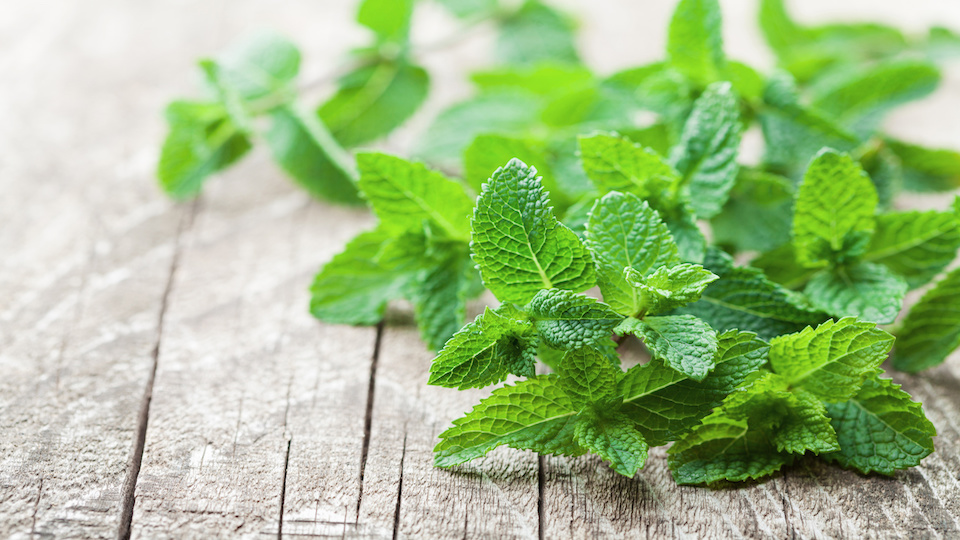Mint is one of the most versatile herbs, with both culinary and medicinal uses, and it is among the easiest to grow. This is a perfect starter plant for anyone new to gardening or those who have more of a black than a green thumb. Mint practically grows itself and it’s tough to kill. Grow any number of tasty varieties indoors or outdoors.
Why Mint?
First, mint is easy to grow. You almost can’t fail at growing it. But more than that, mint comes in a lot of varieties with different flavors, it can be used in a number of culinary dishes and drinks, and it is medicinal. Some fun varieties to try include:
- Peppermint tastes like candy and makes a great tea.
- Apple mint has a more delicate flavor, reminiscent of apples, and tastes great in fresh, light dishes like salads.
- Chocolate mint is decadent. Dry the leaves to make a tasty tea.
- Ginger, licorice, and pineapple mint all have flavors as described and also have pretty and variegated leaves.
A nice cup of homemade mint tea will settle an uneasy stomach and even relieve symptoms of irritable bowel syndrome. It’s easy to prepare a tasty, medicinal tea. Just harvest leaves, let them dry, and steep the dried leaves in boiling water for several minutes.
What Mint Needs to Thrive
Once you get a mint plant going, its needs will be minimal. Provide the best growing condition and your mint garden will grow vigorously. As a perennial, you can expect it to come back year after year too. Here are some of the factors to consider as you prep beds or containers for mint:
- Use a light soil that drains well.
- Make sure the container drains too.
- Soil should be moist but not waterlogged, about an inch or two of water per week.
- Fertilizer isn’t necessary, but a little compost in the soil is beneficial.
- Mint prefers a sunny spot, but it will tolerate some shade.
How to Grow Mint
The easiest way to get started growing mint is to buy starter plants from a nursery. You can start mint from seeds, but you may end up with something different than you expected. Mint seeds don’t always grow true to type because of hybridization.
The best way to get a true mint variety is to use transplants from a trusted source. Or, you can take cuttings or divisions from an established plant. Maybe your neighbor is growing some fragrant chocolate mint. Ask for a division with some roots to start your own plant. The best time to pull out a section is in early spring or early fall.
To plant mint, prepare the container or bed with turned soil, adding compost to the mix. Make sure you plant the roots so that they are just beneath the soil surface. Keep individual plants a couple of feet apart to allow for growth. Give your plants a good watering right away and then only a couple times per week as needed and depending on rain.
Keep Your Mint Contained
While mint is incredibly easy to grow, even for beginners, there is one important thing you need to know: mint will take over garden beds if you don’t contain it. Mint plants send out runners aboveground and rhizomes below ground to conquer new territory. If you plant them in a bed, extreme vigilance is required.
A more effective and easier solution to preventing mint from getting the run of your garden is to plant it in containers. Mint grows very well in pots, but you can also make it work in a bed. Sink a pot of mint into the soil of an herb or flower bed, or use other physical barriers between mint and other plants, like rocks.
Harvest and Enjoy
Once your mint plant is growing well and is at least four inches tall, you can start harvesting leaves. Cut stems down to about an inch above the ground or pick individual leaves. The youngest leaves will have the best flavor. You can let your mint flower, but this will decrease flavor in the leaves. If you want to continue harvesting and using the leaves, pinch flowers off as soon as they appear.
Use mint fresh to flavor juices, teas, and cocktails, in salads and vegetable dishes, in pesto, in desserts, and so many other dishes. Just look up mint recipes, and you won’t be disappointed with the variety and abundance. Your new mint garden will provide you with enough leaves to make and enjoy every recipe.
-Mary Ellen Ellis




